Gear Info
Our Service
Zero Head Gain Roland Tape Echoes
What do we mean when we say a Roland Space Echo has “Zero Head Gain” and why is that so special? A short delve into the world of tape echo restoration and servicing…
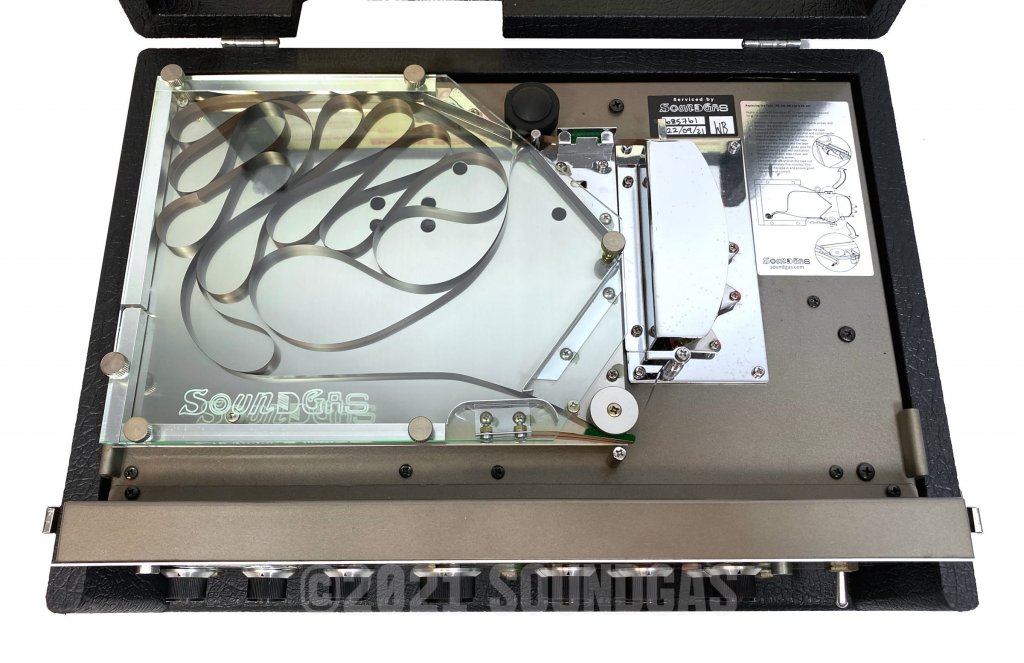
To Tape Or Not To Tape?
Due to the nature of recording onto tape some signal is always lost (and what remains is changed by the process to a greater or lesser degree, depending on the quality of the machine and how well it is maintained and calibrated). These are some elements of what makes tape so interesting and what so many plugins seek to emulate. However, the change in level resulting from signal loss can potentially create issues when replaying the recording alongside the original source.
Roland tape echoes use a recovery preamp in order to amplify the effected ‘wet’ signal from the playback heads. The RE-201 uses one preamp for all the heads, whereas the RE-501 and SRE-555 have individual head preamps, allowing a much greater headroom (hence the 501/555’s more pristine, transparent sound compared to earlier machines).
Head alignment affects the performance of all tape echoes. There is an optimal tape path, which allows each head to send or receive data in the most efficient way. This is controlled by:
- The alignment of the heads,
- Correct pressure: tape surface to head and pinch-wheel to motor capstan,
- Bias adjustment ensuring record and erase functions follow the spec stated in the schematic.
Our Mission: To Go Beyond…
At Soundgas we ensure these bases are covered for every echo we service. Our techs follow the service manual and ensure the setup procedure is as good as, or often better than, Roland’s factory protocol which was created to enable relatively unskilled workers to set the machines up quickly on the production line. In addition our standard service includes – where necessary – re-lapping (or re-honing) heads to smooth out uneven wear, and to restore them to as close to original factory finish as possible, thus providing the cleanest tape path and contact.
The Roland service notes state that a tape echo head is “aligned” once the tape covers both magnets visible on the head (Space Echoes were mass-produced in great numbers so a swift factory set up was essential to maximise profit). While a machine can be set up to perform perfectly adequately in this way, our experience is that by extending this process (and by using different frequency sine waves to increase accuracy), it is often possible to further adjust head position and alignment achieving much improved frequency response from the heads.
Some Pain, No Gain
Once a technician is satisfied with the set up, he or she then adds or removes gain from the recovery preamp circuit. Increased gain leads to hiss, hard to control or less pleasing-sounding feedback and a generally less musical sound. Lower gain at this stage is what a good tech is aiming for, but also to have the wet signal from each head balanced at a similar amplitude (volume) to the input signal.
We discovered, through our decades of collective experience servicing tape echoes that our procedures were, in certain cases, leading to the source and echo signal being equal in amplitude – so no need to boost the echo signal. These machines have greater headroom with clearer repeats: they are the pinnacle of what is possible from a Roland Space Echo.
All our machines leave us sounding as good or better than Roland intended, but these special few are exceptional. Anyone who isn’t an echo obsessive or who buries repeats in the mix might never notice the difference, but we know. And we delight in sharing these machines with people who, like us, appreciate the particular quality that shines through. Just as we have never (so far) been satisfied with the sound of a digital emulation of a tape echo, we revel in the additional wonder of these extra special machines.
Patience is Rewarded (Sometimes)
Not all machines can achieve this “beyond factory spec” level of performance. There are a variety of reasons for this depending on a machine’s history, including variation in component values (either from factory and/or due to age), wear to the heads or other age-related factors affecting the tape path. This can be part of the charm of vintage gear – your machine doesn’t behave exactly the same as the next – and it is the polar opposite of plugin or digital echoes with their perfectly regimented repeats.
An element of what makes a low or zero head make-up gain Space Echo special is that it is impossible to predict the outcome until the final stages of the restoration process. Only after dismantling, cleaning, recapping, testing components, re-honing heads, reassembly, fitting a new tape and pinch roller, head alignment, testing and more testing, do you discover that the machine you’ve restored has that extra special something. Like scratching off each box on a lottery card and not knowing if you’ve won a prize until you scrape off the very last bit of silver – but only after a day or more of work to reach that final stage.
Do I need a Zero Head Gain Space Echo?
So, do you need a “Zero Head Gain” Space Echo? Good question. They cost more, in part reflecting the work that goes into sourcing and producing them, and in part because of their relative scarcity which is only exacerbated because there’s little gain in having amazing head performance if the rest of the machine is not optimal.
While they are “better” by the objective measure the head gain, what you should ask yourself is: will I notice and will my recordings benefit? Of course there are a number of factors to consider. One is how important the lowest possible noise floor is to you. Nils Frahm famously only uses RE-501s for their ‘better’ performance, but when he heard one of our RE-201s he was surprised at the performance and asked if he could buy it (sadly the one we’d taken for him to try was already sold).
It also depends on how you intend to use your echo: will it be in the mix, dusting a touch of tape echo and spring reverb magic over proceedings? Or do you regard this as an investment in your sound – and regard it more as another instrument or sound source than effect? Will you be recording with guitar/voice/keys direct into the echo and teasing out every nuance of the sound? Or overdriving techno beats for maximum dirt and drive (not that a zero head gain machine wouldn’t sound ‘better’ in the latter case, some people actively seek the more grainy/grimy sound of a regular 201).
Generally, the more exposed the Space Echo will be in your music and the more pristine the source, the more you will notice the difference with low or zero head gain.
However it is impossible to cover everything in a general guide: the best advice we can give for choosing the right tape echo is for you to get in touch and discuss your requirements with us. We are here to help and always happy to talk echoes 🙂
More Space Echo Resources
This article is one of many Roland Echo articles on our site. Find more below, or search for them all across the site.
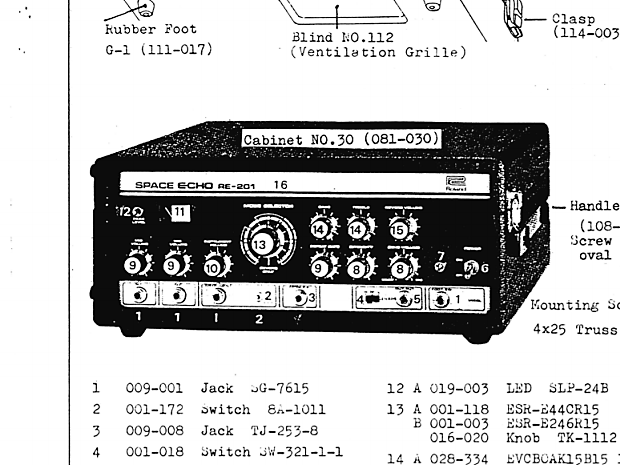
Roland Tape Echo Service Manuals
Links below for service manuals for all models of Roland Tape Echo - available to use and download.

Roland Tape Echo Tips, Tricks & Tales
Some of the nuggets of wisdom we've picked up as we've overhauled, tested & sold hundreds of tape echoes, as well as using them in our...
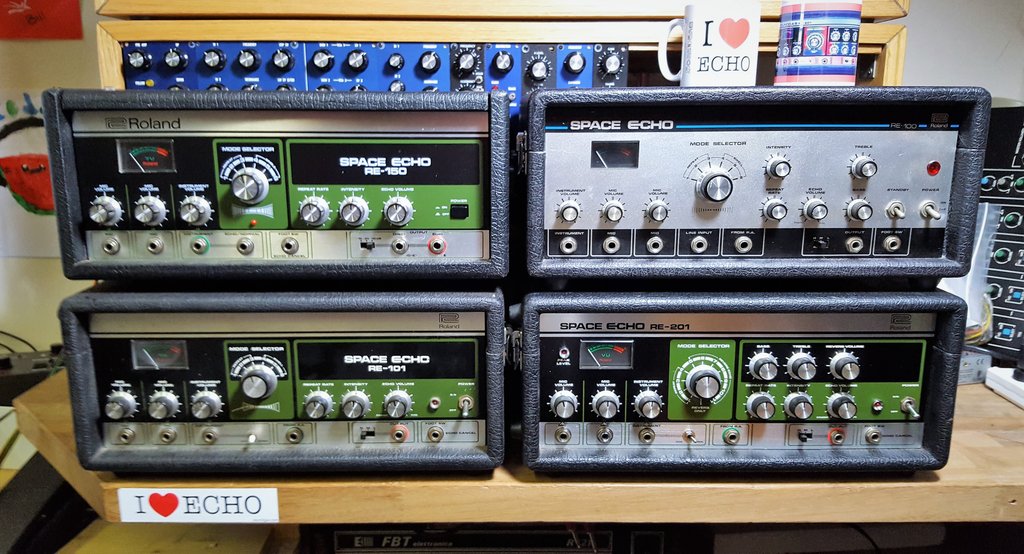
Are Roland Tape Echoes Reliable?
(Spoiler: Yes, but...) We often get asked if Roland Space and Chorus Echoes are reliable: a perfectly reasonable question, given that they're 30 to 40 (or...
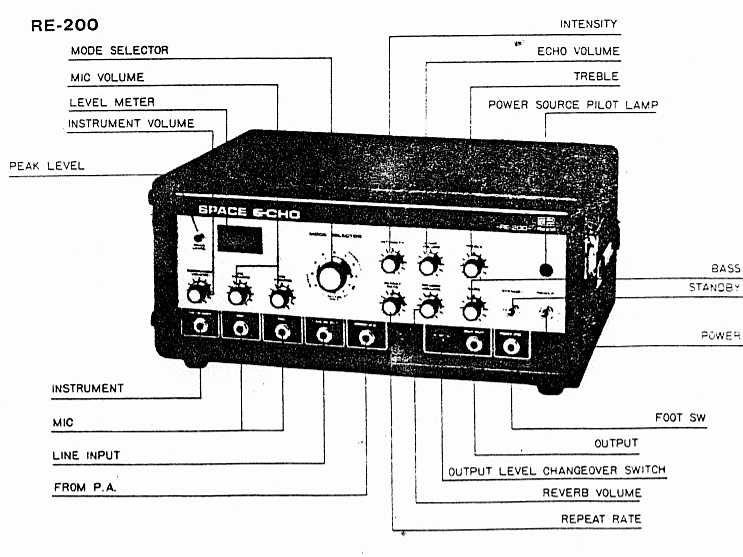
Roland Tape Echo Operator’s Manuals
Links below for manuals for all models of Roland tape echo available to use and download.

How to Change the Tape Loop on a Roland Space Echo RE-201
Info & video showing you how to change the tape loop on a Roland Space Echo RE-201.
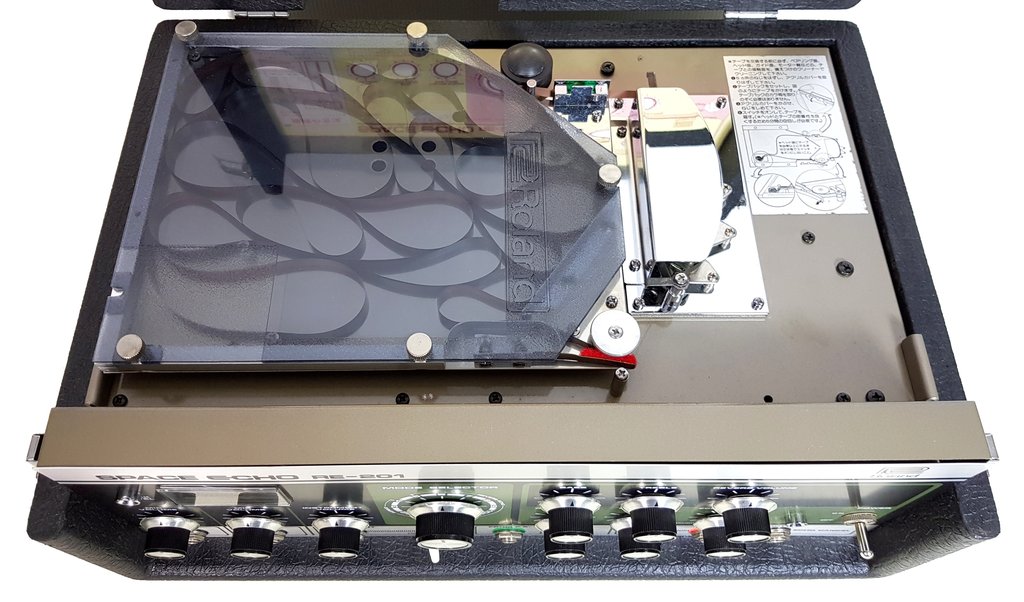
Which is the Best Tape to Use in a Roland Echo?
All tape is not equal. Many (most?) tapes available online do not perform well in Roland echoes... Based on our experience working on hundreds of tape...
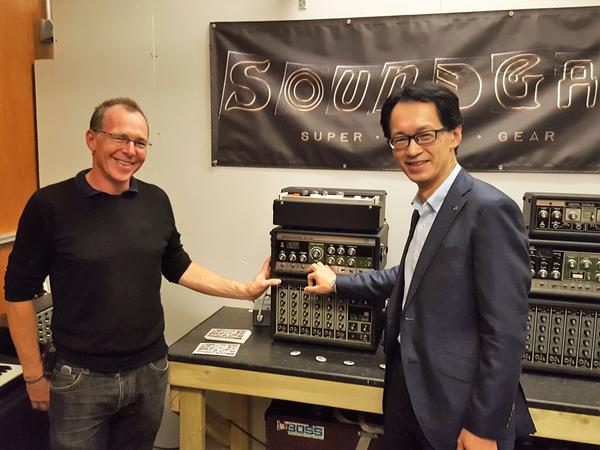
Events
Gear History
When Soundgas met Roland
The story of how we sold Space Echoes to Roland, our trip to London to bring the vintage gear noise to the Boss exhibition launch and...
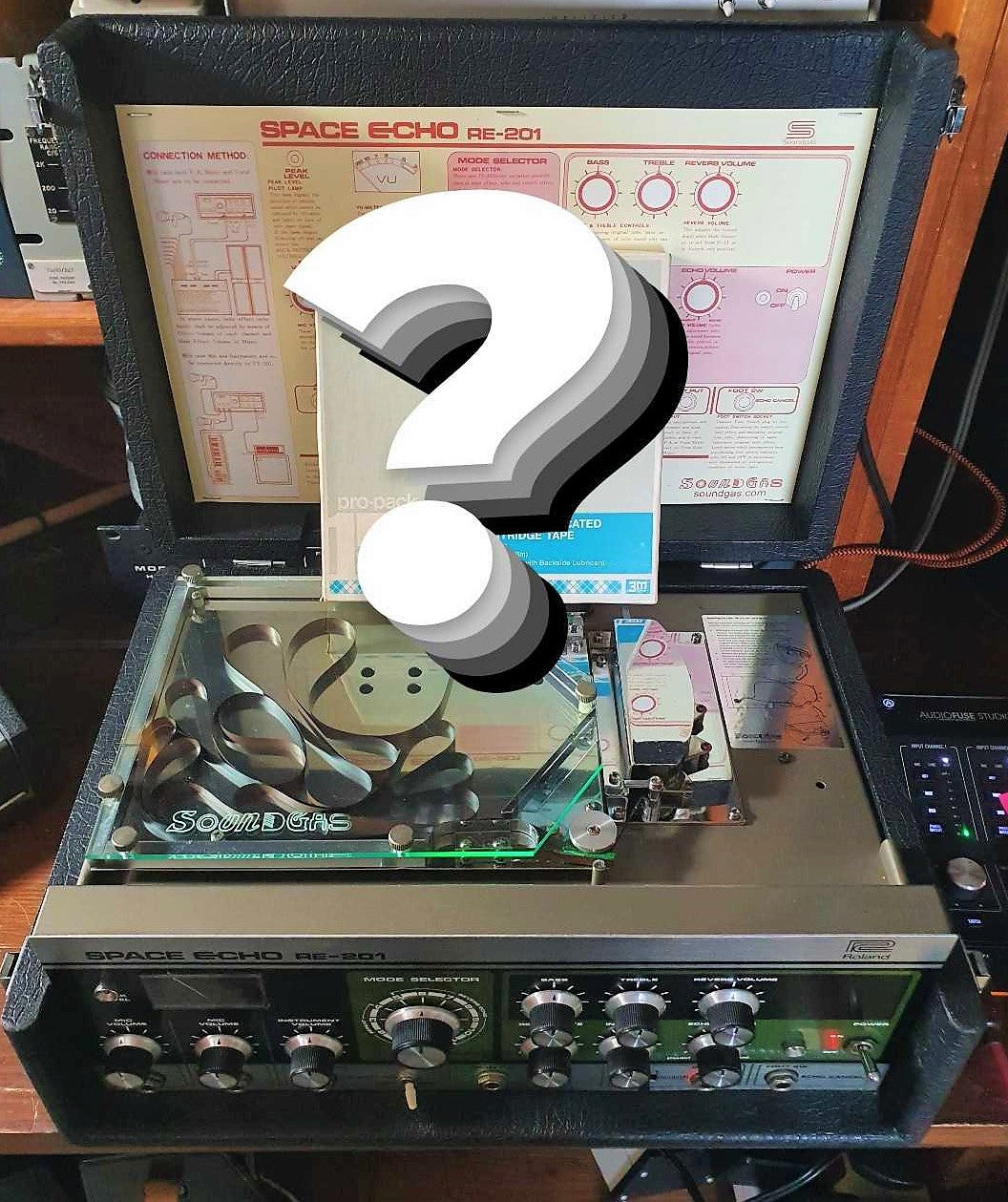
Gear Info
Revealed: The Formula Used By Roland For Tape Echo Loops
The final chapter in our quest to find out what tape to use in our Roland (and other) tape echoes. Spoiler alert: we reveal what the...
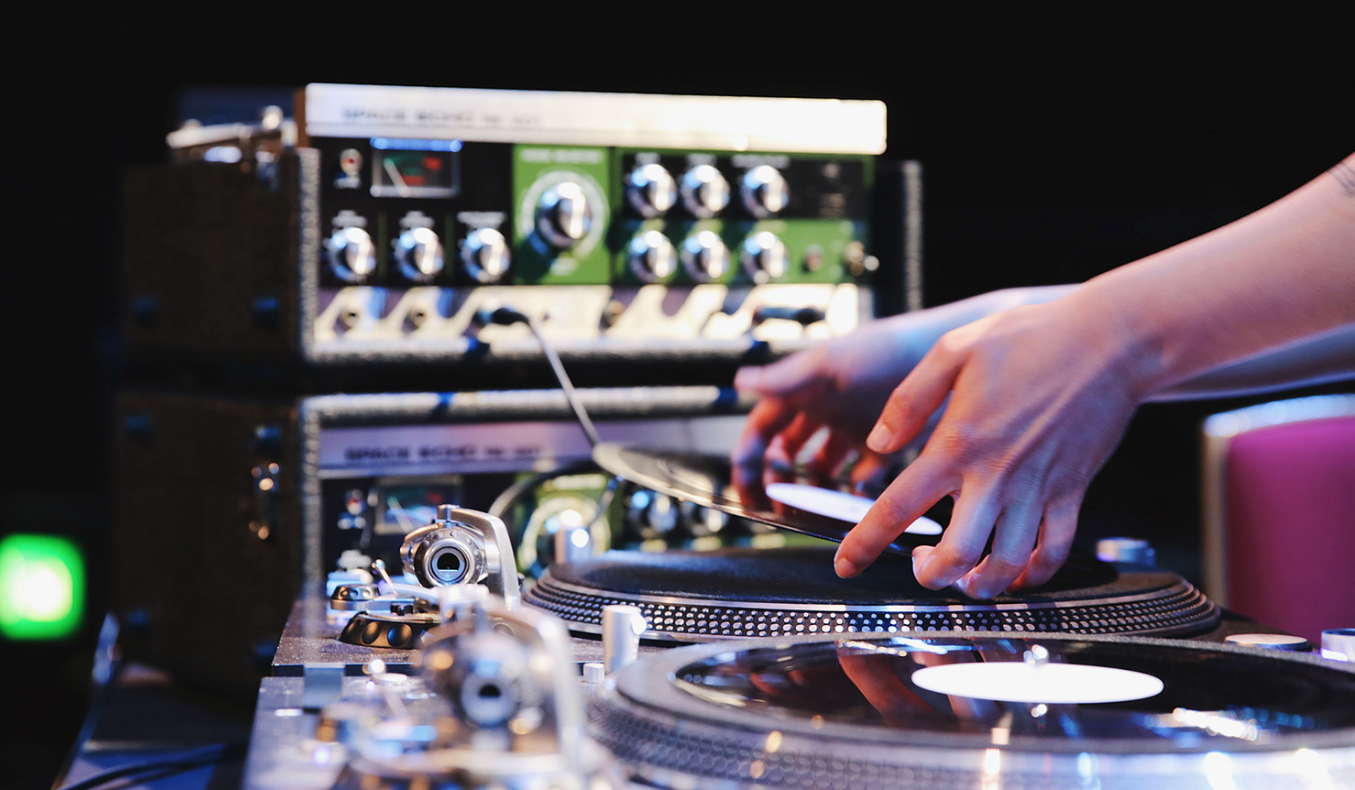
Gear feature
Soundgas News
Daphne Oram’s ‘Still Point’ – BBC Proms 2018
We were asked to supply six Roland RE-201 Space Echoes for the first full performance of Daphne Oram's "Still Point" as part of the BBC Proms'...
